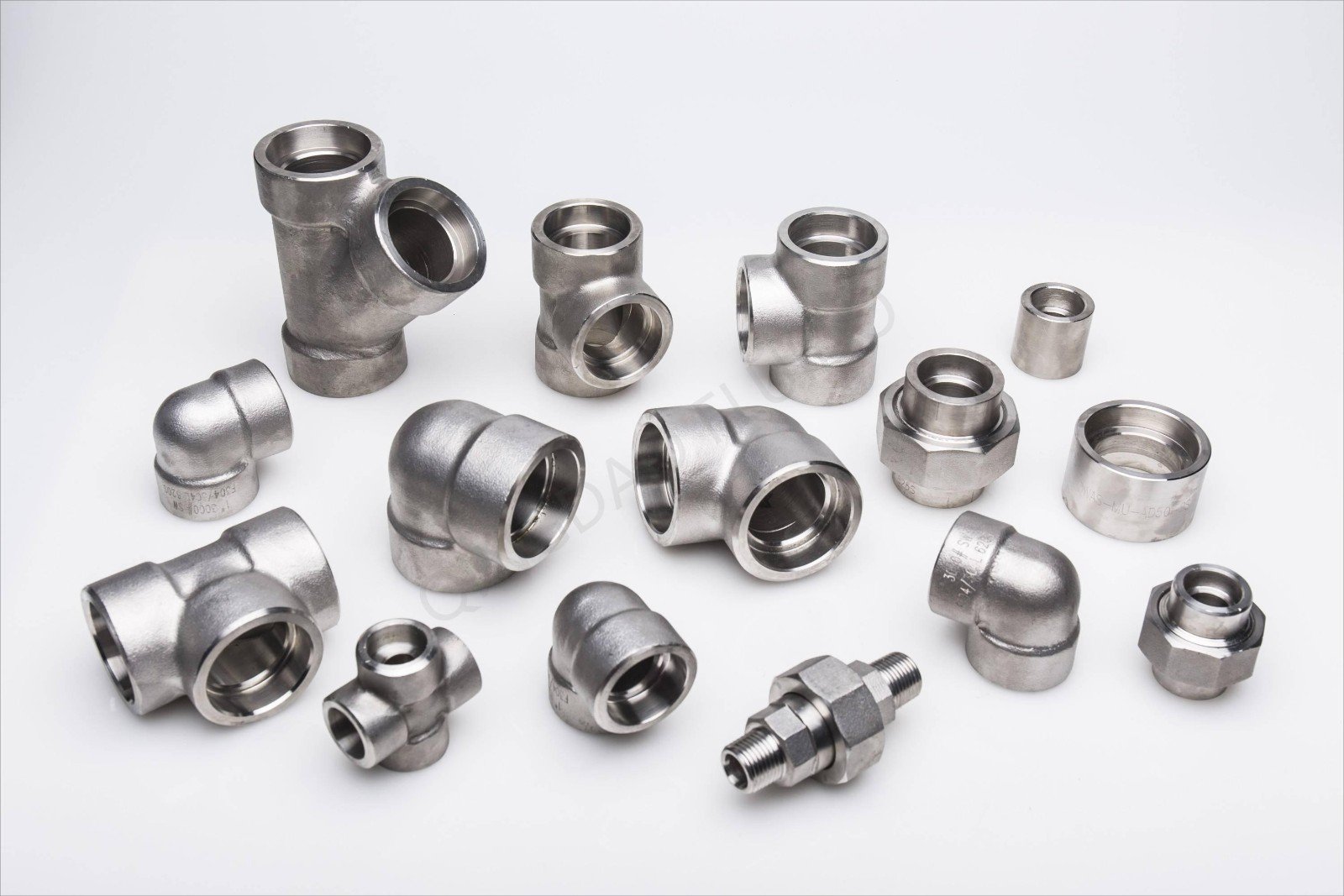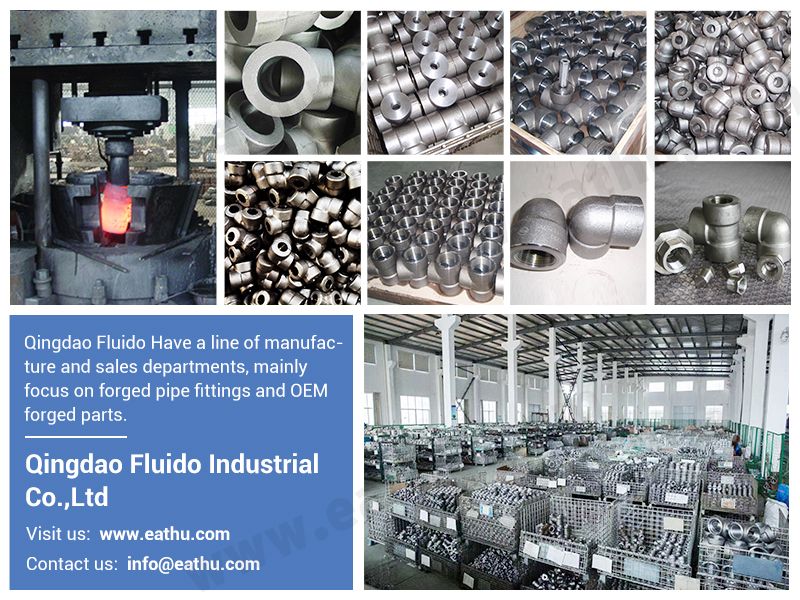Export Office: 21Floor, No.5 Nanhai Zhi Road,Qingdao, Shandong ,China
Work Shop: Beian Industrial zone, Qingdao,Shandong,China
+86 532 88256399
Martin Li
Forged Pipe Fittings
Socket Weld 45 Degree Elbow
View MoreSocket Weld Reducing Insert
View MoreSocket Weld x Female Threaded Union
View MoreSocket Weld Union
View MoreSocket Weld Lateral
View MoreSocket Weld Cross
View MoreSocket Weld Half Coupling
View MoreSocket Weld Coupling
View MoreSocket Weld Cap
View MoreSocket Weld Tee
View MoreSocket Weld 90 Degree Elbow
View MoreButt Weld Union
View MoreThreaded 45 Degree Elbow
View MoreThreaded 90 Degree Elbow
View MoreThreaded Street Elbow
View MoreThreaded Tee
View MoreThreaded Cap
View MoreThreaded Adapter
View MoreThreaded Cross
View MoreThreaded Lateral
View MoreGet A Free Quote
High Pressure Forged Pipe Fitting 2000/3000/6000/9000LBS Manufacturers in China

High Pressure Forged Pipe Fittings (Socket Weld and Threaded) are made in accordance to ASME (American Society of Mechanical Engineers) B16.11, MSS SP 79/83/95/97 and BS3799 standards, and are used to connect nominal bore schedule pipes and pipelines. Commonly, the forged pipe fittings include: socket weld pipe fittings, threaded pipe fittings, outlets, swage and bull plug.
These forged pipe fittings, are commonly used to change the direction in piping, thereby changing the direction of the media flow. Forged socket weld fittings are restricted to smaller pipe diameters (up to NPS 4inch, but usually NPS 2 or smaller) and are available in 2000, 3000, 6000 and 9000 class pressure ratings, corresponding to Schedule 40, sch80, sch160 or XS, XXS pipe. Socket Weld fittings are welded into place with fillet welds, which makes them weaker than butt welding pipe fittings, but still preferable to threaded fittings for high-end work.
In view of the customer's requirements for some special sizes, we designed and produced the 6 inch 90 degree elbow, tee, coupling, half coupling, cap, square plug, hex plug, reducer and hex bushing in 2012, and redesigned and supplemented the EN10241 1000# forged fitting in 2013. Now we can provide customers with a more complete range of forged steel pipe fittings.
Forged Pipe Fittings Manufacturing Standards
●ASTM A182 - ASME SA182 - Standard Specification for Wrought Austenitic Stainless Steel Piping Fittings
●ASME B16.9 - Factory -Made Wrought Butt welding Fittings
●ASME B16.11 - Socket Welding and Threaded Forged Fittings
●MSS SP- 43 - Wrought and Fabricated Butt- Welding Fittings for Low Pressure, Corrosion Resistant Applications
●MSS SP-9S - Swage Nipples and Bull Plugs
●BS3799 - Specification for Steel pipe fittings screwed and Socket- welding for the petroleum indusry
Types of Fittings by Class Designation and NPS Size Range
Description | Socket--Welding | Threaded | ||||
CL3000 | CL6000 | CL9000 | CL2000 | CL3000 | CL6000 | |
45°, 90° Elbows | 1/8--4 | 1/8--2 | 1/2--2 | 1/8--4 | 1/8--4 | 1/8--4 |
Tees, Crosses, Couplings | 1/8--4 | 1/8--2 | 1/2--2 | 1/8--4 | 1/8--4 | 1/8--4 |
Half-Couplings | 1/8--4 | 1/8--2 | 1/2--2 | … | 1/8--4 | 1/8--4 |
Cap | 1/8--4 | 1/8--2 | 1/2--2 | … | 1/8--4 | 1/8--4 |
Square,Hex,Round Plug | … | … | … | 1/8--4(Note) | ||
Hex,and Flush Bushing | … | … | … | 1/8--4(Note) | ||
Note: Plugs and bushings are not identified by class designation.They may be used for ratings up through Class 6000 designation.
Correlation of Fittings Class With Schedule Number or Wall Designation of Pipe for Calculation of Ratings
Class of Fitting | Type of Fitting | Pipe used for rating Basis | |
Schedule No. | Wall Designation | ||
CL2000 | Threaded | 80 | XS |
CL3000 | Threaded | 160 | … |
CL6000 | Threaded | … | XXS |
CL3000 | Socket-welding | 80 | XS |
CL6000 | Socket-welding | 160 | … |
CL9000 | Socket-welding | … | XXS |
Connection Types
2000lbs, 3000lbs and 6000lbs forged pipe fittings have two types of connection: Socket Weld or Threaded. NPT (National Pipe Thread) is the most common thread type although BSPP (British Standard Pipe Parallel thread) is also be available for certain parts like Full Couplings, Hex Bushings and Hex Nipples. We can also provide the G, Rc or Rp threads for our European customers. Socket weld connection is significantly more popular than threaded since most applications call for completely sealing off a line and eliminating all possibility of leakage.
The fittings are normally produced with the same connection for all sides of the same fitting That means, a socket weld fitting will have socket weld connection on all sides. Should different connection ends be required, additional machining could be possible but at a higher cost and a longer lead time. ie Socket weld x Socket weld x NPT Tee.
Prices list for Forged Pipe Fittings
The prices for forged pipe fittings are directly co related to the raw material prices especially in country like China where the cost of conversion is cheaper. The key raw materials for manufacturing forged pipe fittings are bar stock and billets. Given that China is a lowest cost producer for billets and bar stock, China manufacturers like us can sell forged pipe fittings at lowest prices worldwide. We can provide a price list for Forged Pipe Fittings, however the price of Forged Pipe Fittings will fluctuate with the price of raw materials, so the price list is validity for only one week. If you need this price list, please contact eathu sales team info@eathu.com, skype/wechat/whatsapp/mob: +86 13210153062
Material:
Stainless steel: A182 F304/304L, A182 F316/316L, A182 F321, A182 F310S, A182 F347H, A182 F316Ti, A182 F317, 904L, 1.4301,1.4307,1.4401,1.4571,1.4541, 254Mo and etc.
Carbon steel: ASTM A105, A350LF2, Q235, St37, 20#, 16Mn, St45.8, A42CP, E24 , A515 Gr60, A515 Gr 70, A420 WPL6 etc.
Duplex stainless steel: UNS31803, SAF2205, UNS32205, UNS31500, UNS32750 , UNS32760, 1.4462,1.4410,1.4501 and etc.
Pipeline steel: A694 F42, A694F52, A694 F60, A694 F65, A694 F70, A694 F80 etc.
Nickel alloy: inconel600, inconel625, inconel690, incoloy800, incoloy 825, incoloy 800H, C22, C 276, Monel400, Alloy20 etc.
Cr-Mo alloy: A182 F11,A182 F5, A182 F22, A182 F91, A182 F9, 16mo3 etc.
Application:
Petroleum Chemical,Refinery, Pharmacy Industry, Food & Beverage Industry, Sea Water Desalination,Paper Making, Shipbuilding Industry, Electric power, Offshore & onshore oil&gas, Mining Industry, Water Treatment, Mechanical Making, Chemical fertilizer etc.

Production process of high-pressure forging pipe fittings
1. Cutting
The materials used for high-pressure forging steel pipe fittings are steel pipes, plates and bars. The blanking method is selected according to the characteristics of the material and the shape of the blank used in the product.
For steel pipes, commonly used cutting methods include band sawing or bow sawing, gas cutting, and plasma cutting.
For steel plates, the commonly used cutting methods include gas cutting, plasma cutting, and punch cutting.
For steel bars, commonly used cutting methods include band sawing or bow sawing, and punching cutting.
Eathu's raw materials are purchased from large Chinese steel mills, and chemical elements and mechanical properties will be tested when entering the factory. The original furnace number will be displayed on the EATHU material list.
2. Heat treatment
The heat treatment process is an important part of the manufacture of high-pressure forged steel pipe fittings. Through the heat treatment steps of heating, heat preservation and cooling, the work hardening, residual stress and metal deformation defects generated during the forming process are eliminated, so that the metal structure and properties of the pipe after forming are changed, and the state before the deformation is restored or its performance is obtained. Improve and improve.
Commonly used heat treatment equipment is reverberatory furnace, electric furnace, etc.; the usual control method is that the thermocouple in the furnace is connected to the control device of the temperature-time automatic recorder through the sensor.
The routine inspection of heat treatment is usually completed by hardness test. You can find this hardness data on Eathu's material list.
3. Cutting
Cutting is the process of completing the welding end, structural size, shape and position tolerance of the pipe fittings. The cutting processing of some pipe products also includes inner and outer diameter processing. Cutting is done by CNC lathe; for over-sized pipe fittings, when the existing machine tool capacity cannot meet the processing requirements, other methods can be used to complete the processing, such as the gas cutting and grinding method used for large-diameter elbows.
The appearance and size inspection of the pipe fittings are usually carried out after the cutting process. After the production is completed, Eathu can provide the size and appearance inspection report.
4. Surface treatment
The surface treatment of pipe fittings is usually carried out by sandblasting, shot blasting, polishing, pickling and other methods to remove rust and scratches on the surface of the product, so that the product can reach a smooth surface and meet the requirements of subsequent processing and inspection.
The surface hardness of pipe fittings that are surface treated by shot blasting will increase slightly.
5. Non-destructive testing
Non-destructive testing is an important process for testing possible defects in materials and pipe fittings. Eathu will conduct ultrasonic non-destructive testing of stainless steel high-pressure pipe fittings and some welded parts. For carbon steel high-pressure pipe fittings, if the customer requires, EATHU can also provide a test report (a certain fee will be charged).
In order to prevent possible defects in the product during the heat treatment, the final non-destructive testing of the pipe fittings should be carried out after the heat treatment.
6. Surface protection
The surface protection of carbon steel and alloy steel pipes is usually painted, and the stainless steel is passivated after pickling (passivation is not necessary for all stainless steel pipes that are cut on the surface). The main purpose of surface protection of pipe fittings is anti-corrosion, and at the same time, it also achieves the effect of beautiful appearance of the product. Usually, EATHU will determine the specific external surface protection requirements of high-pressure forging pipe fittings with the purchaser before production. The cost of painting and anti-rust oil is the same. Galvanizing and Dacromet treatment need to increase related costs.
7. Logo
The mark is an indispensable part of the product and the basis for achieving traceability requirements. Usually, Fluido high-pressure forging steel pipe fittings will be marked on the surface of the product with the trademark (Fluido), material grade, specification, pressure, thread (if it is a socket connection, it needs to mark SW). Marking methods include permanent marks, such as steel stamping, engraving, and electric erosion; non-permanent marks, such as jet printing, labels, etc.
Regarding the production process of high-pressure forging pipe fittings, we has produced a production process video, please watch the video on YOUTUBE
Package: Cartons in wooden cases.
MOQ: to be negotiated.
Sample: Available
Price: >>DOWNLOAD the forged fittings newest price list from PRICE LIST AND TECH
Service: Customized OEM
Payment term: T/T or L/C
Delivery:10-30days according to order quantity.



















